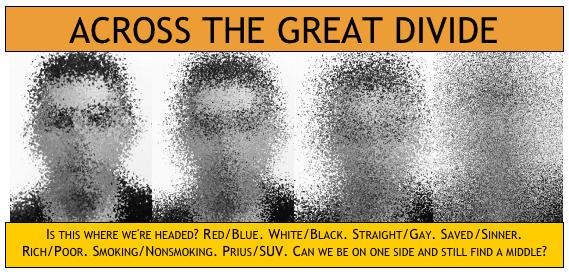Iraqi Artists: Free At Last?
 Mohammed Al Shammarey played in the Iraqi National Symphony Orchestra until a hand injury ended his musical career and he turned to the visual arts for creative expression. The earliest works shown on his website are sculptural — many based on forlorn musical instruments suspended or bound to stone.
Mohammed Al Shammarey played in the Iraqi National Symphony Orchestra until a hand injury ended his musical career and he turned to the visual arts for creative expression. The earliest works shown on his website are sculptural — many based on forlorn musical instruments suspended or bound to stone. During six years in the Iraqi Army, he says, he lived in a hole two meters square. It was then he turned to book arts. The smaller scale of book work fit better with life in a foxhole. Here's his gallery. You can page through the books by clicking on the image.
Along with artist Hana Malallah, Al Shammarey visited Minnesota Center for Book Arts yesterday to show work and preview the touring exhibit of Iraqi Book Artists, Dafatir, currently at Carleton College. Selections of the exhibit will be at MCBA February 17 to March 11.
The looting of the Iraqi Museum of Modern Art after the bombing in 2003 was a sad day for all Iraqis. Baghdad was still one of the premier arts cities in the Arab world, and both artists had work in the permanent collection of the museum.
Al-Shammarey left Iraq after the U.S. invasion. One of his pieces in the show is entitled, "My Retreat from Basra," and many of the books allude to material, cultural and spiritual loss. When asked how the invasion and its aftermath had affected his work, he declined to say that his themes were political.
"My life is miserable," he said," and my art reflects my life."
Likewise, Malallah, who had encountered visa problems and was not expected to make it into the U.S. for the lecture, seemed to reject even the premise that artists should try to make political statements. If you are thinking about politics, you cannot make art. Because you are not focused on formalistic concerns, the work will not be beautiful, she seemed to say through her translator.
Nevertheless, it was difficult not to infer references to war and destruction from their beautiful work.
The very concept of books as art first developed in the Islamic culture, and Malallah has been quoted as calling Iraq's art more precious and important to the world than its oil. Once before, with the 1285 invasion by the Mongols, Baghdad was sacked, its libraries emptied and Islam's flourishing cultural and intellectual traditions forever stunted. So many priceless books from the Grand Library of Baghdad were flung in the Tigris that the river ran blue-black with ink.
 Al Shammarey's book, "The Key of Baghdad," makes reference to a story of an official who surrendered the key that allowed the Mongols to rape the city. But the work, produced in 1999, has clear contemporary overtones. On one page a key seems to transmute into an automatic weapon. Other work salvages materials from post-invasion streets, uses weapons cartons as enclosures and features scorches and holes.
Al Shammarey's book, "The Key of Baghdad," makes reference to a story of an official who surrendered the key that allowed the Mongols to rape the city. But the work, produced in 1999, has clear contemporary overtones. On one page a key seems to transmute into an automatic weapon. Other work salvages materials from post-invasion streets, uses weapons cartons as enclosures and features scorches and holes. 
And Malallah's painting, not part of the book show, but being exhibited in another touring show, is entitled simply, "The Looting of the Museum of Art."

Although hack artwork was certainly produced under Sadaam and it was prudent to declare themselves as non-political, these artists say they were not censored or told what to produce by the government. Monied Iraqi families supported their work and galleries and museums exhibited them. Now, with corrupt and fundamentalist elements on the ascent in Iraq, these artists must seek new audiences for their work. Another unintended consequence of "liberating" the Iraqis.
Although they are still doing beautiful work and may receive wider recognition, these artists gave no indication that their art was flourishing thanks to Operation Enduring Freedom.

Works, from top:
The Key of Baghdad, MAS
The Looting of the Museum of Art, HM
Script, MAS
Circular, MAS. The first line reads: One day, I shall become what I want.




1 Comments:
I saw this article on Iraqi art. It is an interesting perspective and I will stop by to read more.
It is an interesting question: how much of Iraq is free?
Post a Comment
<< Home